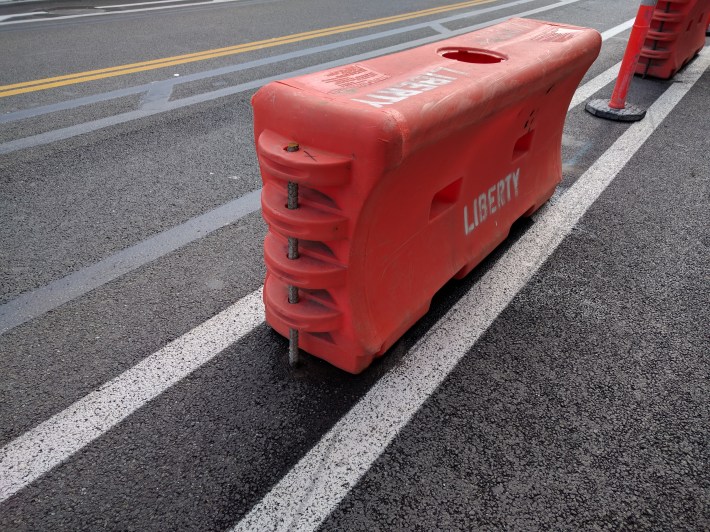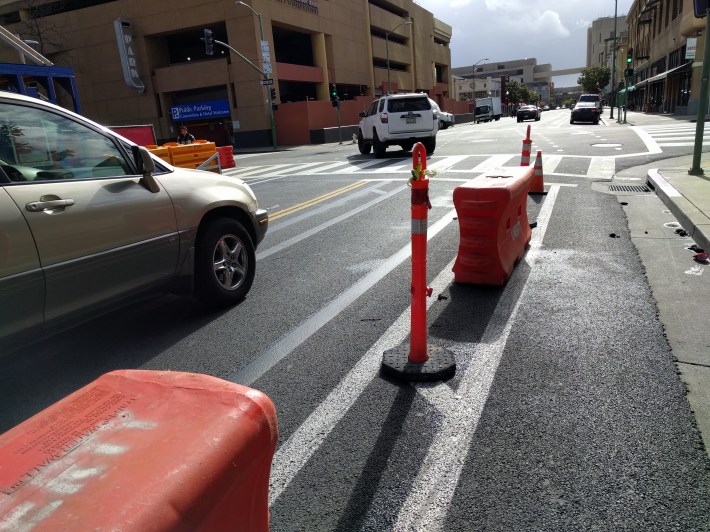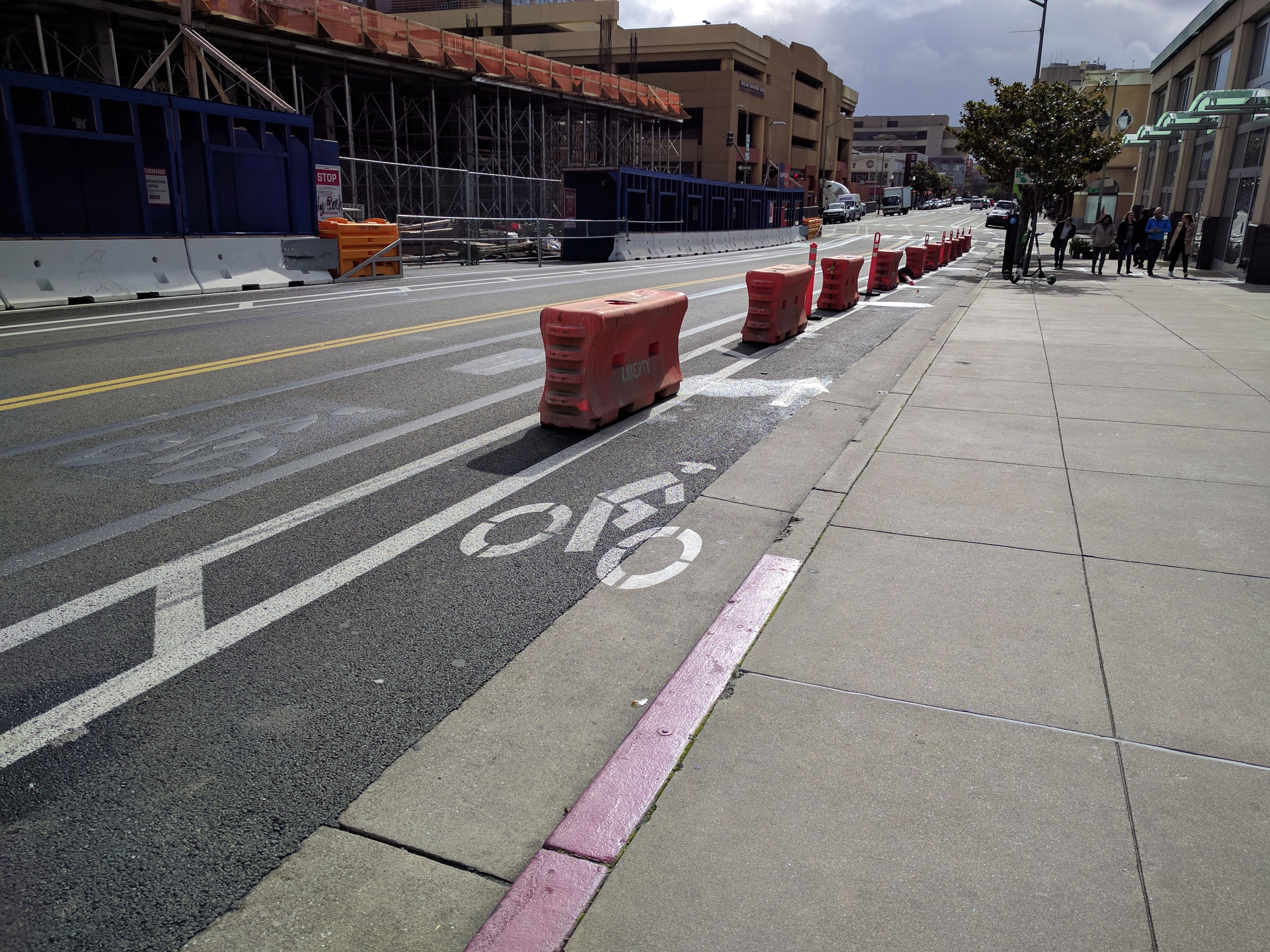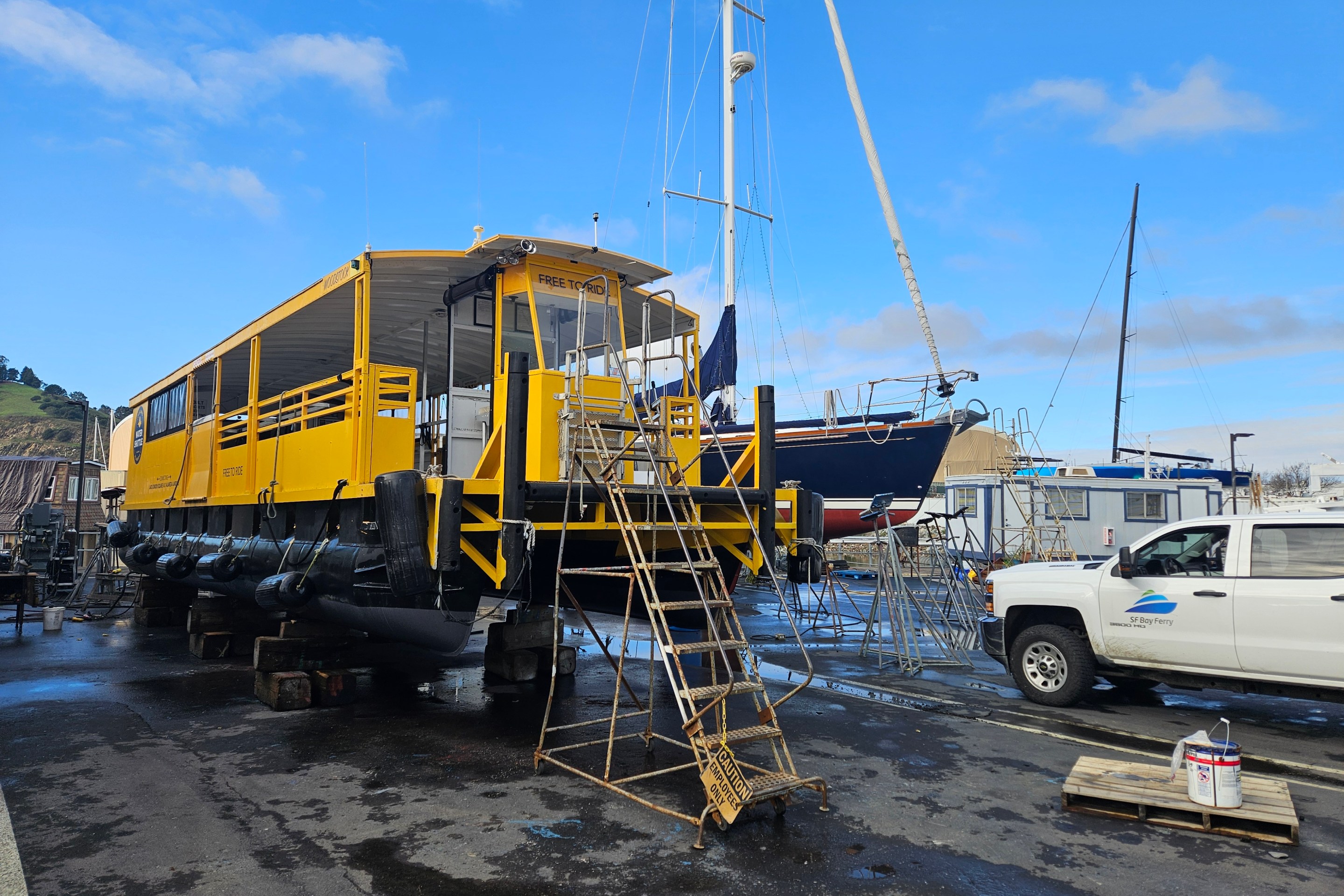Note: Metropolitan Shuttle, a leader in bus shuttle rentals, regularly sponsors coverage on Streetsblog San Francisco and Streetsblog Los Angeles. Unless noted in the story, Metropolitan Shuttle is not consulted for the content or editorial direction of the sponsored content.
Oakland just got a really safe bike lane. It runs for one block of Clay Street, going southbound only, between 12th and 11th Streets, where the lanes had to be slid over to make way for a building construction site, as seen in the lead image.
What makes this bike lane unique is that it obviously cost next to nothing to install. But that doesn't mean it was made with flimsy plastic bollards/safe-hit posts either--it's built with robust Jersey barriers (as seen below in more detail) that are secured to the asphalt with rebar.

In other words, assuming they're filled with water or sand as they're supposed to be, an errant motorist who swerves into the bike lane is going to be stopped before they kill someone. And motorists can no longer park on it by running over a flimsy plastic post or pushing a light-weight planter out of the way, as happens with the parking-protected bike lanes on Telegraph.
Streetsblog has written about the way the safety of cyclists is more-or-less ignored in construction zones. Hopefully, the fix on Clay Street is how construction detours will get done moving forward. But it didn't come easily. Bike East Bay's Rob Prinz was hammering the city for improvements on the street for half a year:
Whole block of Clay St btwn 12th & 11th filled with cars in the bike lane today. Yes, tickets are written but the issue persists. When Oakland PD is ticketed for illegal parking does the city pay the city? pic.twitter.com/gOindmNXZX
— Robert Prinz (@prinzrob) December 12, 2018
Prinz also pointed out to Streetsblog that Oakland's Bike and Pedestrian Advisory Committee was involved in the fight, issuing this statement (at the bottom of the document in this link) to the Oakland City Council's Public Works Committee: "Oakland is experiencing tremendous construction and unless properly designed and implemented, detours can be a hazard to pedestrians and cyclists."
Apparently, near the end of December, these robust barriers were finally dropped to fix the problem at this one location. Streetsblog has an inquiry out to Oakland DOT to find out if this will become the new normal.

Either way, it proves a point that safe-streets advocates have made for years: building safe infrastructure isn't about money, unless we're supposed to believe cities can't afford plastic barriers filled with water or sand. There's simply no reason we can't have robust bike lanes all over the Bay Area for construction detours--and elsewhere.
Are there issues to consider with bus stops and disabled access with this kind of Jersey barrier bike lane? Of course, but "At the very least, Oakland's curbside buffered bike lanes (20th St, 17th St, are there any others?) could get this same treatment immediately with almost no downside," wrote Prinz.





